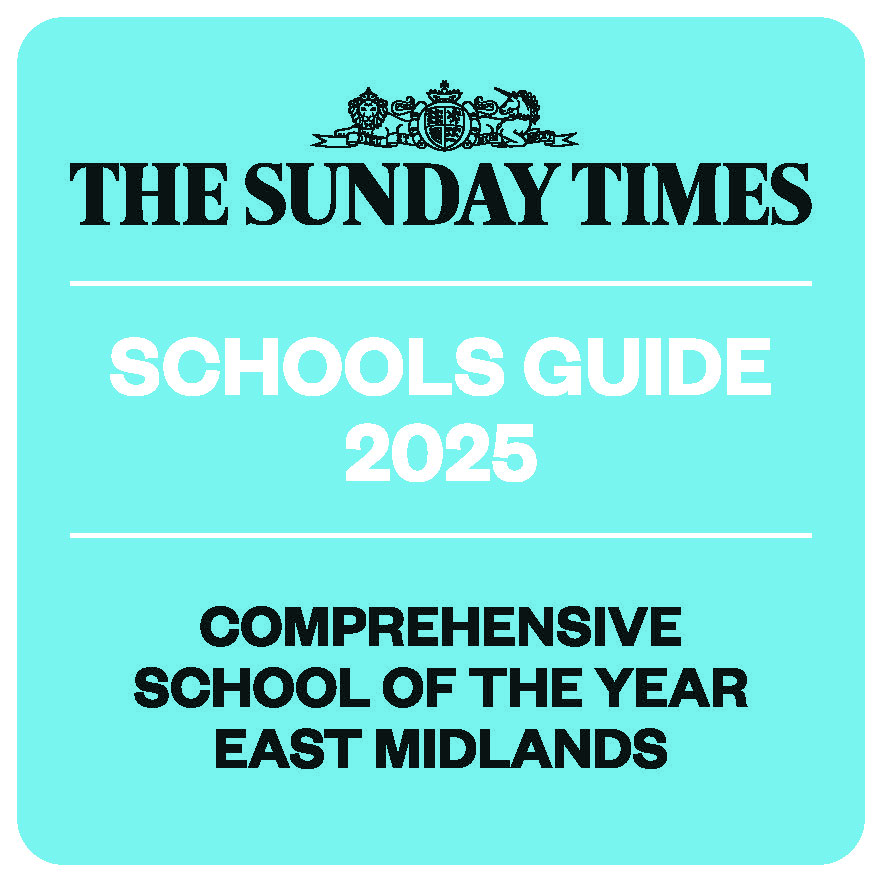Dance
Team Leader - Helen Hassan
Year 7
Introduction to Dance
Performance - Learning set dances to develop physical skills, technical skills, expressive skills and mental skills and attributes.
Dance Appreciation:
- (a) The importance of warming up the body and safe dance practice
- (b) Watching professional dance and learning to describe and explain features of production in relation to dance intention.
Capoeira
Performance - Learning Capoeira steps to develop physical skills, technical skills, expressive skills and mental skills and attributes.
Choreography - Working with a partner to link steps together using evasive movements.
Appreciation:
- (a) Learning about physical skills in dance
- (b) Researching and presenting knowledge of the history of Capoeira.
Sports
Choreography - Learning how to explore a stimulus (different sports such as basketball and rugby). Creating dance sequences using actions, space, and dynamics. Learning to structure dances using devices such as unison, canon, formations, and transitions.
Performance - Sharing creative ideas throughout the process
Year 7 are assessed on their progress in practical work.
Year 8
Street Dance
Performance – Students learn steps from different points in the history of street dance. Students also learn professional repertoire from a Hip Hop dance company production.
Students further develop their physical skills, technical skills, expressive skills and mental skills and attributes.
Choreography
- (a) Creating B-Boy Battles based on historical research.
- (b) Creating dance ideas based on professional repertoire.
Appreciation
- (a) The history of Hip Hop
- (b) Watching a professional dance and learning to describe and explain features of production in relation to dance intention. Learning to identify dance styles and steps in production and analysing how they create intention/meaning.
Contemporary Dance
Performance – Students learn contact-based partner work skills (lifting, supporting) and contemporary dance floor and elevation work. Students learn about choreographic intentions and how to link this to expressive skills in performance.
Choreography - Creating duets and trios using contact, floor, and elevation skills. Students work with different choreographic intentions to inform their ideas.
Appreciation - Watching contemporary dance and analysing the narratives. Discussing how narratives are created and communicated through dance actions, structures, and expressive skills.
Year 8 are assessed on their progress in practical work. They also complete a written test to assess their knowledge of performance skills and choreography.
Year 9
Performance
Students learn to perform in groups dances. This involves developing sensitivity towards other dancers through unison, canon, formation, and contact work.
Students perform their class dance at the school’s annual dance show ‘Junction’. This process involves learning about rehearsal and performance skills such as discipline and commitment, whilst building confidence in performance.
Students study professional dance works throughout the year and learn how to analyse the constituent features of dance.
Technique forms a large part of the Year 9 curriculum. Classes focus on developing the physical and technical skill that is required for more complex dance performances.
Safe Dance Practice forms a large part of the Year 9 curriculum. Students learn about good nutrition, the importance of hydration and how to prevent injuries.
Dance analysis also forms part of the Year 9 curriculum. Students watch and study professional dances in theory and practical lessons.
Year 9 students are assessed through regular short tests and practical tasks.
They are assessed on performance work and complete a written examination paper.
KS4 Dance
YEAR 10 and 11 Subject summary: GCSE Dance
The GCSE programme of study is centred around 6 professional dance works. Through the study of these dances, students explore choreographic approaches, devices, dance styles and features of production. The course embeds all the key skills required for performance and choreography through practical tasks.
PERFORMANCE = Students develop their physical and technical dance skills through practical classes. They develop their expressive skills and mental skills through performance work. Performance and technique forms 30% of the final examination. Students are required to perform two set dances and perform in a duet or trio in a live dance setting.
CHOREOGRAPHY = Students learn about the constituent features of dance, choreographic processes, structuring devices, choreographic devices, aural settings, performance environments and communication of choreographic intent. Choreography forms 30% of the final examination. Students are required to choreograph a solo or group dance in response to examination board set tasks.
APPRECIATION = 40% of the final examination is a written paper. Students are required to answer questions using the knowledge they have gained through practical performance and choreography tasks. The study of the anthology of 6 dance works informs the short essay sections of the examination paper.
GCSE DANCE SPECIFICATION
A LEVEL DANCE SPECIFICATION
A Level Dance
A Level dance allows students the opportunity to place dance within a historical and cultural context, encouraging them to reflect upon their own practical work within the context of professional practice. It promotes the academic and transferable skills valued by Higher Education employers.
There are 2 components to the A-Level course.
- Component 1 - Performance and Choreography
Performance -You will develop and apply the knowledge and skills required to perform dance, as a soloist and in a quartet. You will develop an understanding of physical skills such as neuromuscular coordination and kinaesthetic awareness and apply knowledge and understanding of safe practice: including a healthy approach to training. You will study specified practitioners in depth, analysing their technique and choreographic approaches. Your solo performance will be in the style of a specified practitioner. You will also perform as part of a quartet in a specific dance style (such as Jazz/Urban, Contemporary/Ballet).
Choreography – You will learn how to create an original piece of group choreography in response to an examination question.
- Component 2 –Critical Engagement
You will study prescribed set works, critically engaging with dance; understanding the interrelationship between the creation, presentation and viewing/appreciation of dance. You will also develop and demonstrate an in-depth knowledge and understanding of dance through time and location, relating to features of genre including: style, technique, influences and key practitioners.
How will I be assessed?
Component 1 – marked by AQA 50% of A Level
- Practical examination. Live performance of solo, quartet and own choreography marked by a visiting examiner.
Component 2 – marked by AQA 50%
- Written examination: 2 hours 30 minutes
- Short answer and essay questions on compulsory set works and all areas of dance study.
How will I study?
Lessons will vary in style depending on the topic, though practical classes will be the main approach to teaching and learning along with rehearsals outside of lessons. You will need to be an independent learner creating structured notebooks, reflecting on your own dance practice and learning. You will be expected to undertake wider reading around the practitioners and set study areas, along with personal research into exam questions for your own choreography.
Please contact the school if you would like to find out more about the curriculum.
| Ms H. Hasson (Curriculum Team Leader) | |
| Ms A. Clinton | |
| Mrs N. Italiano-Drew |










